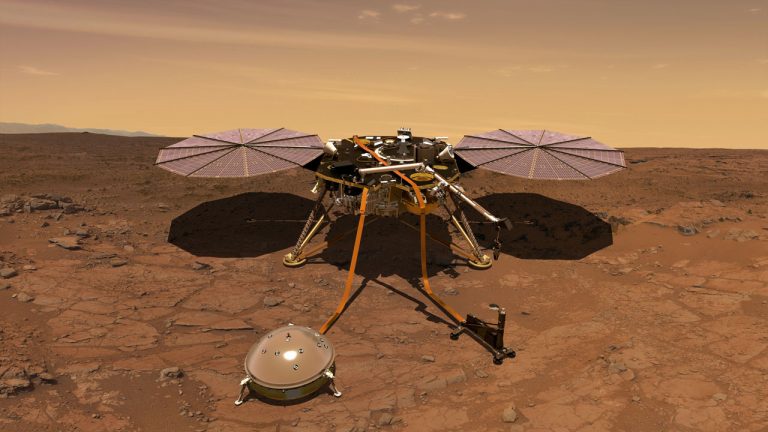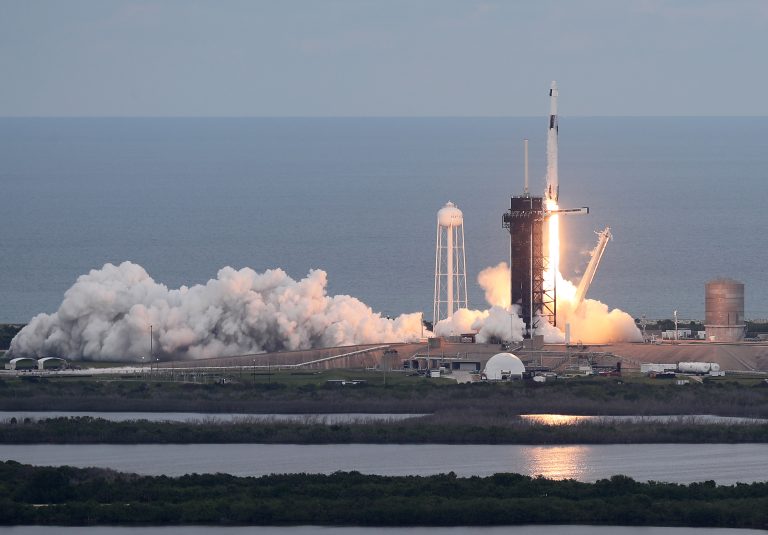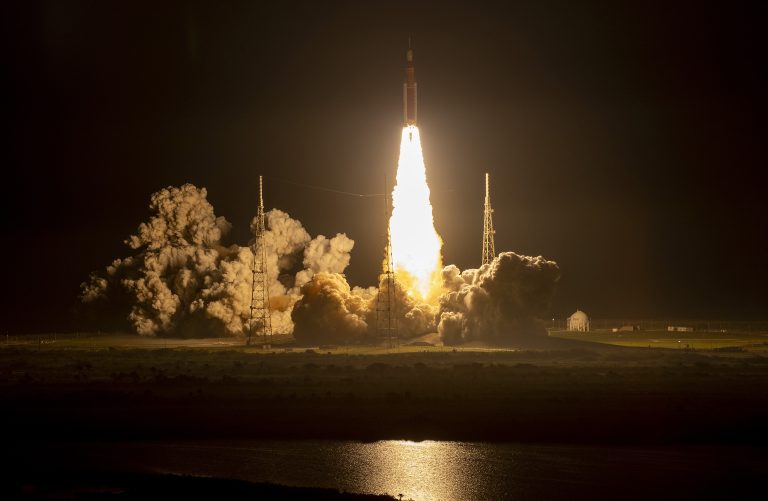The first NASA probe to reach Mars in six years touched down at around 3 p.m. EST on Monday, Nov. 26, completing a journey of around 300 million miles after lifting off from California’s Vandenberg Air Force Base on May 5.
The InSight probe landed in the Elysium Planitia region of Mars and began transmissions, after a period of uncertainty — given the lag in radio signals through space — that scientists at NASA’s Jet Propulsion Laboratory in Pasadena, California, described as “seven minutes of terror.”
By studying the geology of the Red Planet, the InSight mission hopes to glean more general information about Earth and other solid planets.

NASA staff shown in a livestream hours before the InSight landing on Mars. (Image: NASA)

The NASA InSight team reacts after receiving confirmation that the spacecraft successfully touched down on the surface of Mars, inside the Mission Support Area at NASA’s Jet Propulsion Laboratory in Pasadena, California. (Image: NASA / B. Ingalls)
The solar-powered probe is a joint U.S.-European project. It joined the Curiosity Rover, which is the only other manmade probe operating on Mars. Unlike the Rover, it will remain stationary as it gathers information about the planet’s core.
InSight weighs 360 kilograms (around 793 pounds) and is about 18 feet long. It has a 6-foot-long robotic arm to study seismic waves caused by impacts to the Red Planet, as well as a temperature sensor that will look for signs of volcanic activity and other geological data by digging several yards beneath the planet’s surface. The InSight probe will also try to determine whether Mars as a solid or liquid core using radio waves. This could help scientists understand why Mars has a much weaker magnetic field compared with the Earth.
Success
You are now signed up for our newsletter
Success
Check your email to complete sign up
The NASA website explains: “InSight‘s team hopes that by studying the deep interior of Mars, we can learn how other rocky planets form. Earth and Mars were molded from the same primordial stuff more than 4 billion years ago, but then became quite different. Why didn’t they share the same fate?”

InSight’s seismic equipment will allow researchers to study earthquakes on Mars, or ‘marsquakes,’ thus determining more about Mars’ interior composition and the formation of rocky planets in general. (Screenshot / YouTube)
InSight’s seismic equipment will allow researchers to study earthquakes on Mars, or “marsquakes,” thus determining more about Mars’ interior composition and the formation of rocky planets in general.
InSight is the eighth spacecraft to successfully land on Mars, though its launch was delayed by over two years when a vacuum leak was discovered in its primary instruments.
The United States remains the only country to land and successfully operate a probe on the Martian surface. Of NASA’s nine attempted landings, only one, the Mars Polar Lander, failed when its retrorockets malfunctioned prior to touchdown in 1999, destroying the spacecraft.
Starting in the 1960s, the Soviet Union and its successor state, Russia, have made multiple attempts at orbiter, lander, and flyby missions to Mars. In 1973, the Soviet Mars 6 probe became the first manmade probe to land on Mars, but was heavily damaged and only transmitted data for several minutes before shutting down. The Mars 7 probe and its transport missed the planet by hundreds of miles, overshooting Mars and entering orbit around the sun where they still remain at present.
European and Chinese Mars programs have met similarly unfortunate fates.
According to the NASA website, gathering more information on Mars will help astronomers look for other Earth-like planets in the galaxy that may be capable of supporting life.
One advantage to studying Mars is its far smaller size compared to Earth, as well as its relative lack of surface tectonic activity, which on our planet has obscured much of the geological history that would help scientists determine how solid planets are formed.
Follow us on Twitter or subscribe to our weekly email













